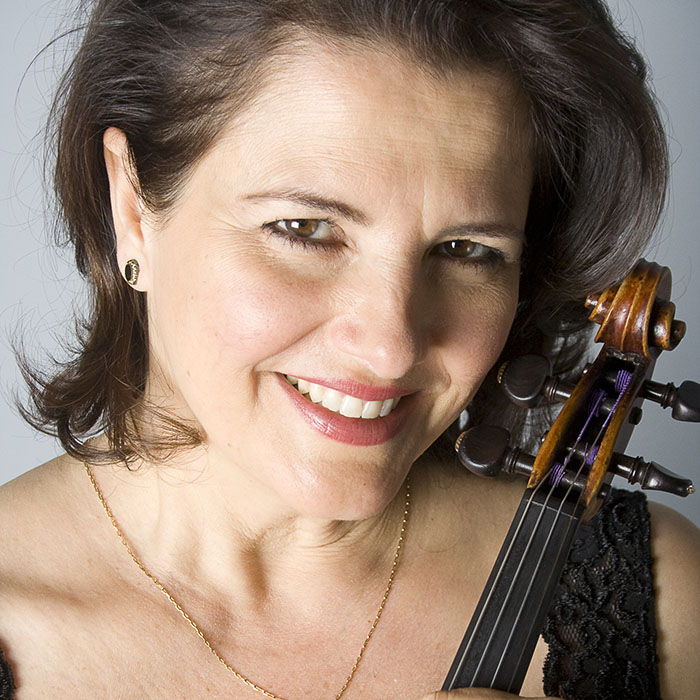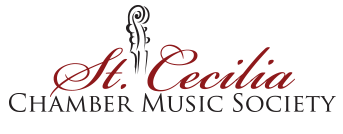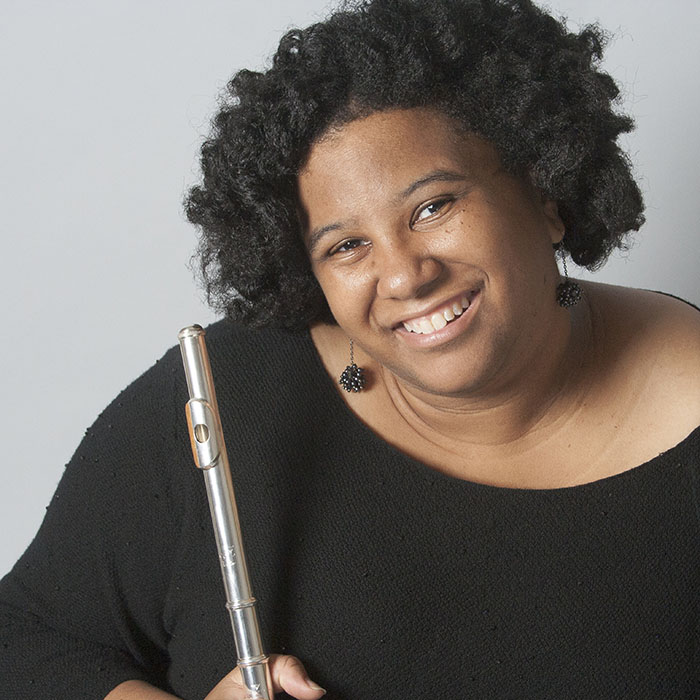2021 – 2022 Season
Beauty, Passion, Variety!
St. Cecilia’s 2021-2022 Season!
We have another stellar season planned for you. We will have live concerts in St. Stephen’s Episcopal Church at 7:30 on Tuesdays of the schedule, and will also present the concert online the next evening (Wednesday) at 7:30.
Season ticket holders for live concerts will be given priority access to the live concerts and access to the live stream. If you purchase an in-person ticket, you will also be granted access to the stream. In addition, we are offering a season ticket for the streaming only for all five streamed concerts. Click on this link to purchase tickets.
Tue., May 17, 2022. 7:30 p.m. – Live / In-Person
Wed., May 18, 2022. 7:30 p.m. – Streamed
“The Last Hurrah”
Duo for flute and piano (1971) – Aaron Copland (1900-1990)
- Flowing
- Poetic, somewhat mournful
- Lively, with bounce
Concertino for flute, viola and double bass (1925) – Erwin Schulhoff (1894-1942)
- Andante con moto
- Furiant. Allegro furioso
- Andante
- Rondino. Allegro gaio
Piano Quintet in A major, D 667, Trout (1819) – Franz Schubert (1797-1828)
- Allegro Vivace
- Andante
- Scherzo. Presto
- Thema. Andantino
- Finale. Allegro Giusto
Lead Musician: Judy Dines, flute
Sophia Silivos, violin; James Dunham, viola; Barrett Sills, cello; Deborah Dunham, double bass and Tali Morgulis, pianist.
Read what Judy Dines, Lead Musician, writes about this concert:
“The Last Hurrah!”
Welcome to the last concert of the season!. All the works on this concert have to do with endings. To start, we will play the Aaron Copland “Duo for Flute and Piano.” This was composed in 1971, towards the end of his life. It was written in memory of the very famous flutist William Kincaid after his death in 1967. It sounds very Copland-esque – lots of big, open chords, and fun rhythms – it’s a popular work for flute – we are lucky to have it in our repertoire!
The next piece on the program is by Erwin Schulhoff, and is his “Concertino for Flute, Viola, and Contrabass.” Schulhoff was a Czech composer born in 1894. It’s an unusual group pairing, but works well in this composition. The four-movement work is based on folk tunes from Eastern Europe. It was written very quickly – just four days in 1925!
The last piece in the program is the “Trout Quintet” by Franz Schubert. The piano quintet was composed in 1819 when he was 22 years old, but not published until 1829, a year after his death. The unusual feature of this piece is the instrumentation – instead of piano plus a standard string quartet, it is written for piano, violin, viola, cello and double bass. It derives its name from a song written by Schubert named ‘Die Forelle” (The Trout) – the fourth movement is a set of variations based on this popular song. This entire piece shimmers with joy and remains one of his most popular works.
There’s one more “last” to include here – this will be the last concert of the Saint Cecilia Chamber Music Society. It has been presenting concerts for eighteen years and has a dedicated following. Personally, I have greatly enjoyed putting concerts together for our audience, and playing with all of the wonderful musicians. The board has done a tremendous job, and they should be very proud of elevating Houston’s music scene for the past two decades. We will greatly miss playing for you all, and we thank you for being a part of us.
Past Concerts
Season opener!
Tue., Oct. 12, 2021. 7:30 p.m. – Live / In-Person
Wed., Oct. 13, 2021. 7:30 p.m. – Streamed
“Lyrical Splendor of Mozart and Mendelssohn”
- Mozart: String Quintet in G Minor, K. 516
- Sibelius: Duo for Violin and Viola in C Major
- Mendelssohn: String Quartet #2 in E Minor, Opus 44
Lead Musician: Barrett Sills, cello.
Sophia Silivos, violin; Oleg Sulyga, violin; James Dunham, viola; and Joan DerHovsepian, viola

Tue., Nov. 9, 2021. 7:30 p.m. – Live / In-Person
Wed., Nov. 10, 2021. 7:30 p.m. – Streamed
“With Strings Attached”
Heinrich Anton Hoffmann (1770-1842)
Grand Duo Concertante in A Major, Op. 5, No. 2 (ca. 1802)
- Allegro
- Andantino un poco con moto
- Allegro non moto
Pierre Jalbert (b: 1967)
String Trio (2008)
- Slow, mysterious; Twice as fast; Tempo I
Maurice Ravel (1875-1937)
String Quartet (1903)
- Allegro moderato
- Assez vif – Très rythmé
- Très lent
- Vif et agité
Lead Musician: James Dunham, viola
Sophia Silivos, violin; Oleg Sulyga, violin; and Barrett Sills, cello

Tue., Jan. 25, 2022. 7:30 p.m. – Live / In-Person
Wed., Jan. 26, 2022. 7:30 p.m. – Streamed
“From Brilliant Youth to Stellar Age”
- Mendelssohn: Viola Quintet in A Major
- Brahms: Viola Quintet in G Major
Lead Musician: Sophia Silivos, violin
Yoonshin Song, violin; James Dunham, viola; Joan DerHovsepian, viola; and Barrett Sills, cello
***CONCERT CANCELLED DUE TO COVID***

From Sophia: For me, another title for this concert could just as well be “Reminiscences.” Our upcoming program on January 25, featuring Mendelssohn’s Opus 18 Viola Quintet No. 1 in A major and the Brahms Op. 111 Viola Quintet No. 2 in G Major, harkens back to my student days at Indiana University. This sunny and youthful Mendelssohn quintet, written in 1826 when he was only 17, was assigned to my group to learn in a chamber music class. Our group worked so amazingly well together. I remember many rehearsals starting with M&Ms placed on each stand by our 2nd violist…and sometimes a flask was passed around just for fun! Sweet memories that have lasted a lifetime were created while learning and performing this piece together.
In 1890, the 57-year-old Brahms wrote the second quintet on our program. The powerful opening will immediately grab you with its vim, vigor and embracing richness so unique to Brahms! In my student days, we would organize a group of musicians to enjoy an evening of sight-reading great chamber music works …yes, this was how we nerdy musicians partied… no audience, performing just for ourselves so as to nurture our love for such extraordinary repertoire. As this is one of Brahms’s most revered and challenging pieces, we would work up to it – i.e. save it for a little later in the evening – out of the desire for deepening our insight from the great master’s works previously played. For me, these reminiscences are forever memories and I relish the opportunity to present them to you.
And finally, there is one other very special reason I am so looking forward to this concert – having the opportunity to work and perform chamber music for the first time with fellow violinist Yoonshin Song, concertmaster of The Houston Symphony.
Tue., Mar. 15, 2022. 7:30 p.m. – Live / In-Person
Wed., Mar. 16, 2022. 7:30 p.m. – Streamed
“Czech Mate”
Bohuslav Martinu (1890-1955)
First Sonata for Flute and Piano, H. 306 (1945)
I. Allegro moderato
II. Adagio
III. Allegro poco moderato
Antonin Dvorak (1841-1904)
Quartet in E-Flat Major for Piano and Strings, Op. 87 (1889)
I. Allegro con fuoco
II. Lento
III. Allegro moderato, grazioso
IV. Allegro ma non troppo
Lead Musician:Sophia Silivos, violin;
Musicians: James Dunham, viola; Barrett Sills, cello; Judy Dines, flute and Andrew Staupe, piano.

Read what Sophia Silivos, Lead Musician, writes about this concert:
Our concert on March 15 features music of two outstanding Czech composers, Bohuslav Martinu (1890-1955) and Antonin Dvorak (1841-1904).
Judy Dines and Andrew Staupe will perform Martinu’s Sonata for Flute and Piano. This Sonata was written in the summer of 1945 while Martinu was in Cape Cod, Massachusetts. He had been invited to teach at Tanglewood by the Boston Symphony Orchestra’s conductor, Koussevitzky, a supporter and admirer of his music. Martinu’s inspiration for the third movement came from his experience nursing an injured whip-poor-will back to health during his time composing this piece. One can hear this bird’s song recalled at least half a dozen times.
Dvorak’s brilliant Piano Quartet in E flat Major was written in 1889 and given its premiere in 1890, the year that Martinu was born! Typically, a composer is inspired to write a piece for a specific performance, yet Dvorak wrote this Piano Quartet only after several years of urging from his publisher Simrock to write a new piano quartet. (12 years earlier, Brahms had been so taken with Dvorak’s talent that he had introduced Simrock to Dvorak.) Dvorak completed this composition in five weeks while at a summer home in Czechoslovakia. His piano quartet is truly a favorite for performers and audience.


